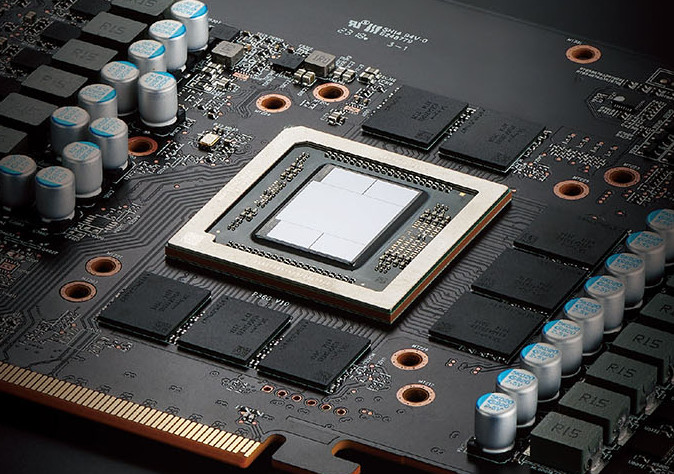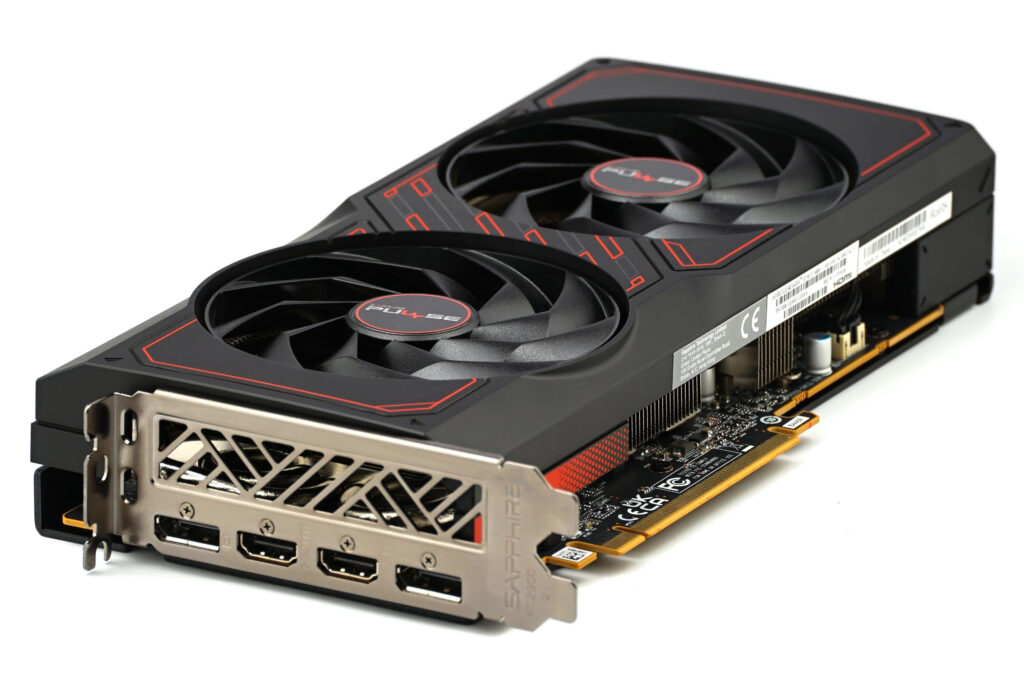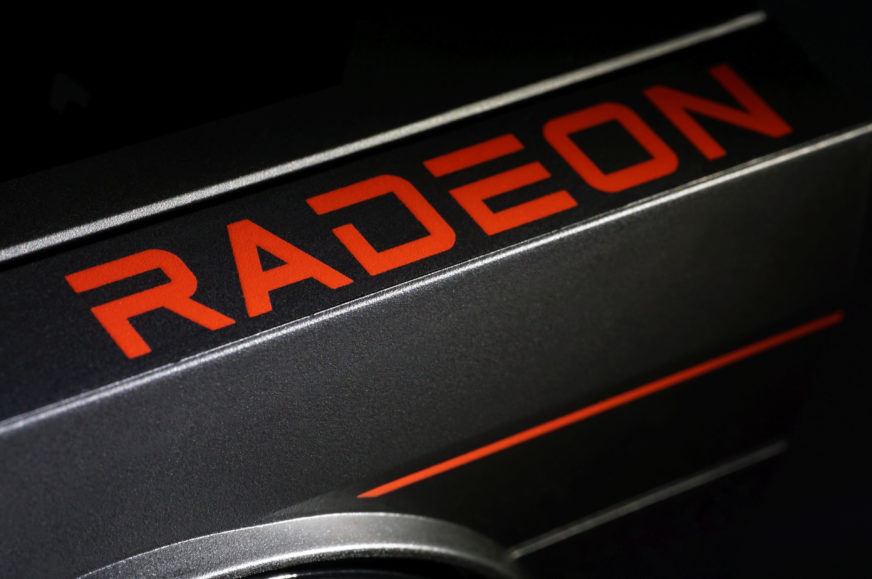Navi 48 and Navi 44
Previously, new GPU generations were coming in 2-year cycles, which would mean a launch this fall. However, Nvidia’s roadmap has put the GeForce RTX 5000 launch into 2025 some time ago. AMD is still unclear on the launch date of Radeon RX 8000s, but there’s some chance it’s within this year. The specs of these GPUs using RDNA 4 architecture have now surfaced on the internet. If they are real, it might even point to a release relatively soon.
The information about the alleged specifications of the RDNA 4 GPUs was shared by a Twitter account with the tongue-in-cheek name All The Watts!! We previously wrote about the alleged Radeon RX 7500 specifications based on this source, but such card has not appeared on the market so far (unless it quietly exists somewhere in some forgotten OEM builds…). So take that into account and be prepared that this information may not end up being confirmed (also, it has not yet been picked up by the VideoCardz website, which can sometimes serve as a an indicator of sorts). However, it’s interesting that these alleged specs state fairly specific things that should be verifiable later, which adds a bit more confidence.
Navi 48: mainstream replacement for RX 7800 XT and 7900 XT?
There should be two RDNA 4 architecture GPUs – the more powerful Navi 48 and the cheaper and relatively small Navi 44. Both should be manufactured on TSMC’s 4nm node as monolithic chips. According to All The Watts!!, the Navi 48 is made up of 4096 shaders in 32 Workgroup Processors (WGP), or 64 CUs. Also listed is the number 64, which could probably mean the Infinity Cache capacity of 64 MB, and then the number 256. This is likely to be the memory bus width, i.e. 256 bits.
Then the number 693 is listed (these figures are without a legend, frustratingly), which could possibly indicate the memory bandwidth in GB/s – such a bandwidth would correspond to an effective memory clock speed of 21.65 GHz, which probably means that GDDR6 memory will be used (not the new GDDR7), probably with a capacity of 16 GB. A cut-down model with a 192-bit bus and 12GB of memory could be based on the same GPU, of course.
The bigger unknown is the number 2770 listed last. The explanation which would normally seem most likely is that this is the clock speed (probably boost clock) that graphics cards based on the Navi 48 chip will achieve. However, the final clock speed of the individual SKUs is not something that is known that far in advance. And what’s more: according to some interpretations, which the account later retweeted as if being in agreement with them, this number represents the so-called “effective bandwidth” of the memory after accounting for the effect of Infinity Cache. Unfortunately, you can’t derive the chip clock speed from it. We think this interpretation is like to be correct, particularly given the ratio between the numbers given for Navi 48 and 44.

The Navi 48 GPU is said to have a die area of around 240 mm², which is somewhere between the die area of the 7nm Navi 23 chip and the 6nm Navi 33 die (but as mentioned, the more expensive 4nm node is used for Navi 48).
Still, according to All The Watts!!, the performance could be somewhere between thethe graphics cards using cut down version of the Navi 31 chip and the fully enabled version. That is, somewhere between the Radeon RX 7900 GRE or XT (that’s a pretty important question, unfortunately we don’t know which cut-down version was meant) and the Radeon RX 7900 XTX, which will not be surpassed in performance by Navi 48.
Later, All The Watts!! added that the graphics card (probably the fully enabled model) with Navi 48 should be able to achieve up to 50 TFLOPS of theoretical performance at about 215W of power consumption – but take this with a grain of salt, we are not sure this really means total board power, as the number could alternatively be talking about 215W power consumption of just the GPU alone, not including memory and VRM power consumption, in which case the total TDP could be up to 260–280 W. It is not clear which of these interpretations is correct.
50 TFLOPS could probably get the card to perform better than the Radeon RX 7900 XT in games, if the architecture is improved and achieves more practical gaming performance per MHz and per compute unit (which may not be true, we’ll see). For a GPU with 4096 shaders, those 50 TFLOPS should otherwise correspond to a boost clock speed of 3052 MHz.
- Read More: Radeons RX 8000 said to be mainstream only, RDNA 4 without high-end
- Read More: Ray tracing on AMD RDNA 4 will be twice as fast thanks to BVH8
Navi 44: mainstream similar to Navi 33, but faster
The other, smaller chip, Navi 44, basically looks like a half of Navi 48. While the latter looks like a sort of successor to the Navi 32 (256-bit bus, 3840 shaders), the Navi 44 looks like a successor to the Navi 33. The chip will contain 16 WGPs, i.e. 32 CUs and 2048 shaders. It has 32 MB of Infinity Cache.
The memory bus of Navi 44 is 128-bit wide, so it should be equipped with 8 or 16 GB of memory, the claimed bandwidth of which is 288 GB/s, which sits with GDDR6 at 18.0 GHz effective clock. Next to that, the number 515 is listed, which we assume again represents the effective memory bandwidth. It is in this parameter where Navi 44 ceases to be exactly half of Navi 48, but this drop in effective bandwidth is not exactly weird: the ratio between the effective memory bandwidths of the Navi 32 and 33 is almost the same (Radeon 7800 XT: 2708 GB/s; Radeon 7600 XT: 477 GB/s), which is probably why people on forums and Twitter figured out that these numbers indicate effective memory bandwidth in the first place. By the way, these are pretty specific values, so they could probably come from some materials that AMD gave to card manufacturers or other partners.
According to All The Watts!!, the performance of this GPU should be higher than Navi 33 (which was probably expected from the start), but it is said to be lower than Navi 32. This was implied in a rather cryptic tweet using the Linux driver code codenames for these GPUs (Hotpink Bonefish, Wheat Nas). As with everything in this report, take these predicted performance levels with a grain of salt.

The die area of the Navi 44 is supposed to be just about 130mm², less than two-thirds of the 204mm² of the Navi 33. So there is some scope for these GPUs to be relatively reasonably priced (relatively by today’s standards). However, it must be remembered that with the same die area, a chip made on a 4nm node will be much more expensive than one made on a 6nm node. On the other hand, the power consumption could be lower (at worst the same) than the Radeon RX 7600.
When will we be there?
When can we expect these GPUs to launch (or what they will be called – they could perhaps be designated Radeon RX 8800 XT / 8700 XT and Radeon RX 8600 / 8600 XT), we still don’t know yet. Computex 2024 is two months away, and something about these GPUs might be revealed during AMD’s keynote presentation. However, the summer is approaching and we have not seen any leaks of PCBs or ES card photos appearing anywhere. With that taken into account, it’s starting to look more likely that the launch will happen in the fall (September to November) at the earliest, and not as early as July for example.
Sources: All The Watts!! (1, 2, 3)
Jan Olšan, editor @ Cnews.cz
⠀
- Contents
- Navi 48 and Navi 44








